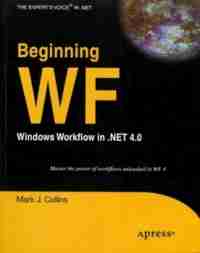Faster previews. Personalized experience.
Get started with a FREE account.

by Dino Esposito
720 Pages
·
2002
·
3,678 Downloads
·
New!
XML is everywhere in the Microsoft .NET Framework, from Remoting to Web services and from data access to configuration. Learn about the extensive XML core classes in .NET and find out how to program against its parser in this in-depth guide – written by a popular programming author and consultant on cutting-edge technologies such as Microsoft ASP.NET and Microsoft ADO.NET. You’ll find authoritative explanations of technologies such as schemas, transformations, and XPath, plus extensive discussion of data access issues such as synchronization and serialization, the DiffGram format, and the XML extensions in Microsoft SQL Server.

by John Sharp
736 Pages
·
2010
·
4,923 Downloads
·
New!
Your hands-on, step-by-step guide to building connected, service-oriented applications.

by Dennis Hayes
744 Pages
·
2009
·
3,192 Downloads
·
New!
LINQ is the project name for a set of extensions to the .NET Framework that provide a generic approach to querying data from different data sources. LINQ made its debut in Visual Studio 2008, and became a mustâhave skill for .NET developers.

by Chris Smith
410 Pages
·
2009
·
2,434 Downloads
·
New!
Why learn F#? This multi-paradigm language not only offers you an enormous productivity boost through functional programming, it also lets you develop applications using your existing object-oriented and imperative programming skills. With Programming F#, you’ll quickly discover the many advantages of Microsoft’s new language, which includes access to all the great tools and libraries of the .NET platform.

by Jens Kuhner
448 Pages
·
2008
·
2,928 Downloads
·
New!
The Microsoft .NET Micro Framework is a small and efficient .NET runtime environment used to run managed code on devices that are too small and resource constrained for Windows CE and the Compact Framework.

by Fabrice Marguerie
576 Pages
·
2008
·
2,621 Downloads
·
New!
LINQ, Language INtegrated Query, is a new extension to the Visual Basic and C# programming languages designed to simplify data queries and database interaction. It addreses O/R mapping issues by making query operations like SQL statements part of the programming language. Adding to its power, LINQ is extensible and can be used to query various data sources. It offers built-in support for querying in-memory collections like arrays or lists, XML, DataSets, and relational databases.
